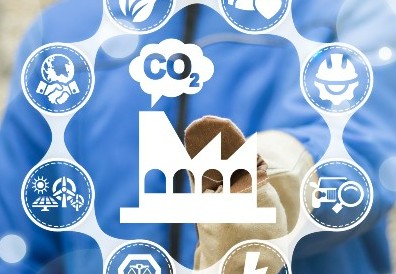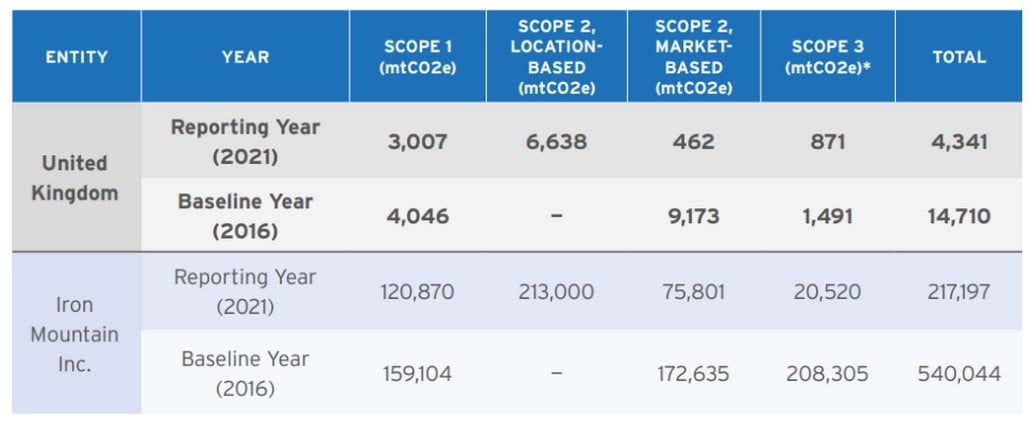For true sustainability, your supply chain matters
Annual sustainability reports may not encapsulate the entirety of an organisation's environmental impact.

With 80% of global organisations* reporting on their environmental impact and a majority committing to reduce their carbon emissions year over year, it’s safe to say environmental, social, and governance (ESG) initiatives are a top priority for leaders across industries.
However, annual sustainability reports may not encapsulate the entirety of an organisation’s environmental impact. Regulating bodies around the world are increasingly pressuring and even mandating organisations to include their supply chain vendors in their environmental disclosures.
Global climate consultancy experts at Carbon Trust estimate that up to 90% of an organisation’s environmental impact falls within its supply chain. To back that up, research we conducted with Economist Impact indicates that more than 60% of organisations believe they need to improve visibility into their supply chains to foster overall business resilience.**
Think beyond your own carbon footprint
Measuring the impacts of an organisation’s supply chain touchpoints means looking at scope 3 emissions. We invite you to view our annual response to CDP and visit our corporate responsibility webpage for more information about Iron Mountain’s commitment to environmental sustainability. Resources available on the corporate responsibility webpage include our annual Corporate Responsibility Report, Task Force for ClimateRelated Disclosure (TCFD) report, and Global Environmental Policy. We may also make our UK Environmental Policy available upon request.

*Scope 3 categories include downstream leased assets, upstream T&D loss and business travel. Iron Mountain recognises the importance of a complete and accurate greenhouse gas inventory as a step to reduce greenhouse gas emissions from our value chain. We are in the process of evaluating potential scope 3 calculation methodologies for other relevant scope 3 categories.
1) Please note that these figures are pending our final data assurance statement which will be made available as part of our annual Corporate Responsibility Report.
As you evaluate your scope 3 emissions impact, it’s also important to think beyond carbon; look at areas in your supply chain where you might be using a lot of water or generating waste. With so many moving parts (the EPA counts 15 total scope 3 emissions categories), it can be hard to track it all and, even so, not every piece is relevant to every organisation. This is why it’s necessary to maintain governance by selecting vetted and responsible supply chain partners.
Here are three tips to help you engage with your supply chain to reduce your own environmental impact:
- Align on materiality. To do this, you must first go through the process of conducting your own materiality assessment where you identify, refine, and assess environmental issues impacting your business. This type of assessment can help start a dialogue in your company around sustainability, what’s important to you, and how best to ensure your sustainability goals are met with like-minded vendors. Once you’ve narrowed your most material items to a few high-impact areas, you can use that information to select supply chain partners with similar sustainability goals. Find out if your vendors have conducted a materiality assessment with their key stakeholders, such as employees, leadership, customers, and investors. This exercise helps determine what is relevant and important to their businesses so that you can better prioritise and align with what is important to yours.
- Gather and synchronise data. Data is essential to supporting any sustainability programme. Organisations gather what is called “activity data” from key sources and calculate their impact. Choose supply chain partners who can easily provide you with data, and determine how it contributes to your environmental impact. For example, Iron Mountain customers can obtain tonnage data for their secure shredding programme or an annual certificate of attestation validating green power usage for data centres.
- Build community.Ask your vendors (and potential vendors) to tell you about their sustainability efforts. Then look at the work you do together. Start a conversation and discuss ways to reduce your combined impact. By building a community across your supply chain, you’ll experience environmental improvements that can lead to cost reductions, business opportunities, areas of innovation, and the chance to help support global climate change mitigation efforts.
Ask your supply chain vendors the right questions
To get a better sense of your organisation’s work with existing supply chain partners, talk to your procurement team. They can provide you with a list of everyone your company works with and, from there, you can ask questions and use tools like EcoVadis and CDP Supply Chain to assess their sustainability efforts.
Whether you’re already working together or you’re evaluating new partners, consider asking:
- Does your organisation have a sustainability policy?
- Do you release a Corporate Social Responsibility report?
- Have you set any environmental goals?
- Do any third parties verify your data?
- What visibility do I have into the services that impact my environmental reporting?
- How can you help me reach my environmental goals?
Stay accountable to your sustainability commitments
By including data from your supply chain partners in your reporting, your organisation will establish itself as more accountable, comprehensive, and transparent when it comes to your sustainability efforts, which ultimately reflects the integrity of your brand. So, when it’s time to add a new partner to your supply chain, make sure your goals are aligned, ask them to provide you with the sustainability data you need, and start having regular conversations about ways you can lessen your overall environmental impact.
Learn more about how Iron Mountain can help support your sustainability goals here.
*The KPMG Survey of Sustainability Reporting 2020
**Research by Economist Impact, sponsored by Iron Mountain
Related resources
View More Resources

